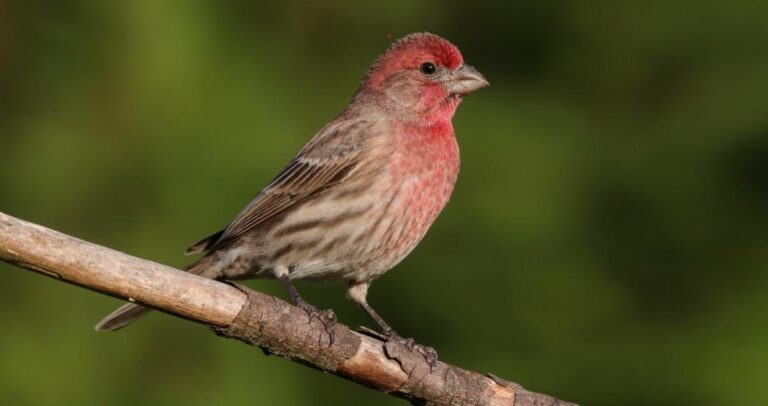What Are Predators Of Crows
Crows, members of the genus Corvus, are intelligent birds known for their adaptability and resilience.
They are found in various habitats worldwide, from forests and farmlands to urban cities. These birds play a significant role in the ecosystem, acting as both predators and prey.
Understanding the predators of crows and their interactions can provide valuable insights into the dynamics of nature.
Predators, organisms that hunt and feed on others, are crucial for maintaining balance in the ecosystem.
They help control the population of various species and contribute to biodiversity. In the context of crows, several predators pose threats to their survival.
This article will delve into the main predators of crows and explore other less common threats.
The Main Predators of Crows
Eagles
Eagles are one of the primary predators of crows. These powerful raptors are known for their exceptional hunting skills.
They can swoop down at high speeds to catch unsuspecting crows, often targeting those that are young or weak.
Eagles’ superior strength and speed make them formidable predators, capable of overpowering crows with ease.
Hawks
Like eagles, hawks are raptors that pose a significant threat to crows. Hawks are agile and fast, capable of catching crows mid-flight.
They are opportunistic hunters, preying on a variety of animals, including crows.
Hawks’ keen eyesight allows them to spot potential prey from great distances, making them efficient hunters in various environments.
Owls
Owls are another group of raptors that prey on crows. Unlike eagles and hawks, owls are nocturnal hunters.
They take advantage of the cover of darkness to ambush their prey, including crows. Owls’ silent flight and powerful talons make them effective predators, capable of catching crows off guard.
Humans
Humans are also considered predators of crows, albeit for different reasons than other predators.
Some humans hunt crows for sport, while others do so to protect their crops or livestock.
Despite legal protections in many areas, illegal hunting of crows still occurs, posing a significant threat to their populations.
Other Predators of Crows
Raccoons, Squirrels, and Opossums
Raccoons, squirrels, and opossums are opportunistic predators that can pose a threat to crows, particularly their eggs and young.
These mammals are known to raid crow nests, consuming eggs and nestlings when given the chance.
Their climbing abilities allow them to reach nests located high in trees, making them a significant threat during the crow breeding season.
Tree-Climbing Snakes
Tree-climbing snakes are another predator of crows. These snakes are adept climbers, capable of reaching crow nests to feed on eggs and nestlings.
While not a threat to adult crows, tree-climbing snakes can significantly impact crow populations by reducing their reproductive success.
Crows face threats from various predators, each with unique hunting strategies and preferences.
Understanding these dynamics can help us appreciate the complexity of nature and the challenges that crow face in their daily survival.
The Dynamics of Predation and Survival
How Predators Hunt Crows
Hunting Strategies of Eagles, Hawks, and Owls
Eagles, hawks, and owls employ different hunting strategies to catch crows.
Eagles and hawks are diurnal hunters, using their keen eyesight and swift flight to spot and swoop down on their prey during the day.
They often target young, weak, or isolated crows, using their powerful talons to snatch them up.
Owls, on the other hand, are nocturnal hunters. They use the cover of darkness and their silent flight to their advantage.
Owls can ambush crows at their roosting sites, catching them off guard. Their powerful talons and beaks allow them to kill and carry off their prey with ease.
Human Hunting of Crows: Reasons and Methods
Humans hunt crows for various reasons. Some do it for sport, while others see crows as pests that damage crops or pose a threat to livestock.
Hunting methods vary, but they often involve the use of firearms or traps.
Despite legal protections in many areas, the illegal hunting of crows remains a significant threat to their populations.
Crows’ Defense Mechanisms Against Predators
Mobbing Behavior Against Hawks and Eagles
Crows exhibit a behavior known as “mobbing” when faced with predators like hawks and eagles. This involves a group of crows banding together to harass and drive off the predator.
Mobbing can involve loud calls, diving attacks, and other aggressive behaviors.
This collective defense strategy can be surprisingly effective at deterring larger and more powerful predators.
Crows’ Intelligence and Survival Strategies
Crows are renowned for their intelligence, which plays a crucial role in their survival strategies.
They have excellent memory and can recognize individual humans and other animals. Crows also use tools and problem-solving skills to find food and protect themselves.
Their social nature and communication skills help them alert each other to threats and coordinate their responses.
FAQs
Crows are generally wary of new or unfamiliar objects, a trait known as neophobia. They are particularly scared of predators like eagles, hawks, and owls. Human activity can also scarecrow, especially if they have had negative experiences with humans in the past.
Several bird species are known to chase or mob crows, including hawks, eagles, and even smaller birds like songbirds and sparrows. This behavior is usually a defensive response to protect their nests or young from potential predation by crows.
Crows mob hawks as a defensive strategy to protect themselves and their young.By banding together and harassing the hawk, crows can often drive it away from their territory. This behavior also serves to alert other crows to the presence of a predator.
The relationship between crows and hawks is primarily one of predator and prey, with hawks preying on crows. However, it’s also characterized by the defensive mobbing behavior of crows. Despite being prey, crows can be surprisingly aggressive towards hawks, especially when defending their nests or young.

